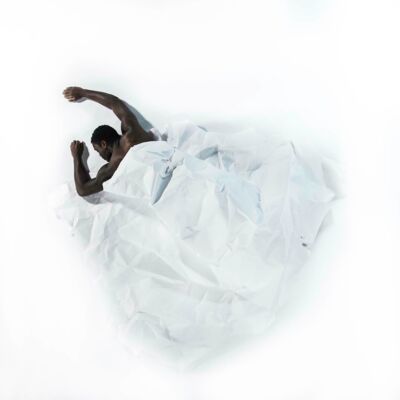Prof. Aaron Nix has work purchased by Murray State University gallery

Aaron Nix, assistant professor of art, recently had one of his art pieces purchased by Murray State University’s Clara M. Eagle Gallery, where it will become part of its permanent collection.
The piece, titled “Paper Series #4,” earned third place out of 83 pieces included in The Magic Silver Show: The Elena Diane Curris Juried Photography Exhibition, a biennial international juried show open to artists working in all photo-media processes. With the third-place finish, Nix also received a Purchase Award, leading to his work belonging to the permanent collection.

Nix also had his “Paper Series #5 selected for the show. His two pieces were selected from more than 600 works from more than 100 artists that were submitted and considered for the show.
“It’s an honor to have these two pieces selected for this prestigious show,” Nix said. “It means a lot to have my work purchased by a gallery in an academic setting that values photography work at such a high level and to know it will be a resource for Murray State again in the future.”
He submitted his work to the show because of its broad, inclusive look at photographic arts, which aligns with his teaching philosophy, as he encourages class conversations about what photography means in our culture and how our society is part of determining what it will become.
“Having a show dedicated to a wide spectrum of approaches to the craft poses similar questions about what unifies us and the medium throughout history,” Nix said.
From an idea that came to him in the middle of the night, Nix’s Paper Series features people wrapped or surrounded by white paper within a large white space, looking from an objective bird’s eye viewpoint.
“I initially wanted the paper to appear very wasteful and uncomfortable, compared to the serene qualities of the models,” Nix said, “but very quickly, my process became more of a study of the figure and material.”
In the planning phase, Nix said he tried to not think too much about the “why” he was doing this project, which was a rare perspective for him. Embracing the improvisational nature of the project, without having to follow a detailed plan, was freeing.
“Not every idea worked out but the happy accidents far outweigh any regret about failed ideas,” he said. “Without the help from family, friends, colleagues and students, there’s no way this project gets completed, let alone have any success.”